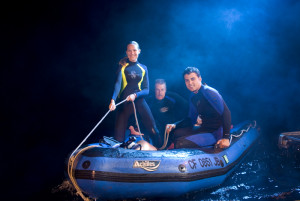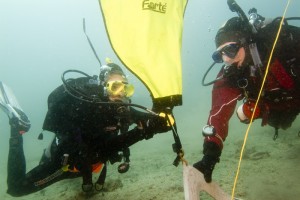Adventure of a lifetime or a lifetime of adventure? I’d choose the lifetime of adventure, myself. With Scuba, you can explore that unknown of the underwater world. Adventure in a nutshell, right?
If you read my recent blog post on the PADI Open Water Diver course, you know that it’s undergone some revisions. For the longest time, we’ve been teaching divers to dive with them on their knees or sitting. Up until the recent course revision, I would have objected: we don’t teach divers to dive on their knees or sitting on the bottom. There’s one step further. In the PADI Open Water Diver course, we teach the basics of how to set up and operate SCUBA equipment and basic skills to handle problems that might occur underwater. Unless you’re an instructor, you aren’t going to learn to dive just so you can remove and replace your mask underwater. I’m not saying it’s a bad thing to be an instructor, but as divers we’re on this adventure to explore and to SEE things! Continuing education courses take you from the basics to doing what divers do for fun.
Let’s take a look at the normal progression. After the Open Water Diver course, your next step could be the PADI Adventures in Diving program, leading towards wither the PADI Adventure Diver or PADI Advanced Open Water Diver certifications (or both). Adventure Diver and Advanced take you three or five dives focused on a specialty area of diving. I like to think of it as the beer sampler from your local pub. PADI Adventure Diver requires that you complete any three adventure dives. For example, completing a night dive, a fish identification dive and a digital underwater photography dive. Advanced Open Water might sound a bit daunting. You might think you need to be an advanced diver to take it. Rather, it’s a way to advance your skills and knowledge to make you an Advanced Open Water Diver. The only difference between Adventure Diver and Advanced, other than the number of dives is that for Advanced you need to complete a deep dive and a navigation dive.
Alternatively, after Open Water, you can take Specialty diver courses. While the Adventures in Diving program is the beer sampler, the Specialty Diver course is the pint or even a pitcher of your favorite brew. Here, you’ll go into the specialty diving area in depth (sorry for the pun…kinda). You’ll typically make two to four dives in that specialty area. Here’s the cool part: the adventure dives from your Adventure Diver or Advanced Open Water course can count as the first dive of the specialty course. Similarly, the first dive of each specialty can count towards Adventure Diver or Advanced. I’ll be talking about other specialties in blog posts throughout the rest of they year, so stay tuned for more details.
Once you’ve completed at least Adventure Diver, you’re ready to take the next step (assuming you’ve also completed a navigation adventure dive): Rescue Diver. Again, this may sound daunting. We’re not looking to turn you into a public safety diver that recovers cars, evidence and bodies. Rather, you’re trained to be more aware of the divers around you and learn how to not only react to but preferably prevent problems. You’ll learn about equipment problems, psychology of rescue and how to manage an emergency scene. You’ll also learn CPR and First Aid, skills that apply in diving and non-diving circumstances.
If you look at the PADI Continuing Education flowchart, it looks like there is a fork in the road here, but not really. It may look like you have a choice, either become a Master Scuba Diver or become a Divemaster. You don’t have to do just one or the other. In fact, if you’re looking to become a Divemaster, I’d also suggest you become a Master Scuba Diver. “What’s the difference?” I hear you asking. A PADI Master Scuba Diver has completed PADI Adventure Diver (with the PADI Navigation Adventure dive), PADI Advanced Open Water or an equivalent, completed PADI Rescue Diver (or equivalent), has completed five(5) PADI Specialty Diver Courses and has logged at least fifty(50) dives.
Divemaster is the first of the professional levels. To start down the path as a PADI Divemaster, you need to complete the PADI Rescue Diver course (or equivalent) and have logged at least forty dives. Then, you’ll complete extensive training in diver supervision (both students and certified divers), dive management, dive physics, physiology and equipment and learn more about the business of diving. To complete the program, you’ll need to have completed all academics and in-water training and logged a total of sixty(60) logged dives. From my point of view as an instructor, the ideal Divemaster is also a Master Scuba Diver. That way you know what goes on in Specialty diver courses and are in a better position to help out.
What’s next? Instructor-level training and Instructor-level continuing education. There is much to be said here, so I think I’ll leave that for some future blog posts.

